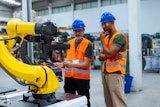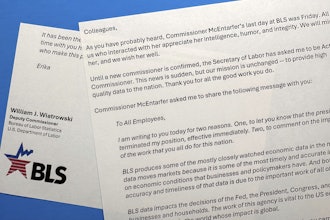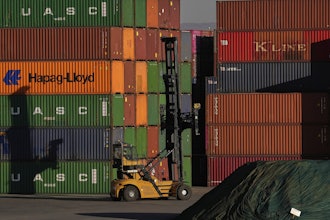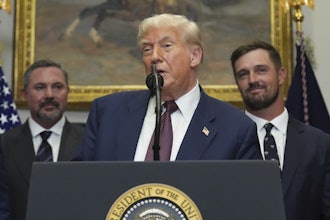On August 16, 2012, the Obama administration announced that a new public-private institute based out of Youngstown, Ohio, would be awarded $30 million in order to establish a base for additive manufacturing innovation. The newly-formed organization — the National Additive Manufacturing Innovation Institute (NAMII) — will consist of more than 40 members spanning entities that the region’s biggest thinkers call home: universities, technical schools, not-for-profit firms and private companies.
The “TechBelt” region, which NAMII and its organizers describe as the “Cleveland-to-Pittsburgh corridor and surrounding region,” has been hit hard by the recession, with numerous plant closures and the loss of manufacturing jobs. The I-80/I-79 corridor has nearly 32,000 manufacturers, and countless employees who have those “high-tech” skills that modern manufacturers need to thrive, but oftentimes, there simply isn’t enough work to go around.
David Burns, President and Chief Operating Officer at ExOne, believes NAMII could change that, with a groundswell of jobs related to additive manufacturing. He says, “It was gratifying to us that the national government would take interest in manufacturing to begin with … and the fact that they would focus in on progressive or innovative technologies is even more encouraging.”
ExOne, an additive manufacturing and micromachining company based out of North Huntingdon, Penn., is one of the handful of private companies — along with universities and other public institutions — to work together on the NAMII proposal, and is now looking forward to getting the institute started over the coming months.
Burns says that the proposals needed to be centered on non-profit organizations that were capable of creating collaborative environments, so that education, materials development and technology could all work together without worrying primarily about the bottom line — at least for now.
How NAMII Will Work
The additive manufacturing institute is centered on a non-profit organization — the National Center for Defense Manufacturing and Machining (MCDMM) — which gives it a structure that is fundamentally different than a collaborative effort focused solely upon making money. Burns says that under this structure, engineers and other innovators will propose projects to the institute —a typical project would be seeking, for example, a better way to make a part out of titanium.
At this point, the educational component of NAMII will come into play. Professors or students at Case Western Reserve University, Carnegie Mellon University and Youngstown State University, among others, can try to take the problem through research. A metals expert connected to the institute may also be brought in to provide a certain level of expertise.
From here, NAMII will turn to a company like ExOne as a printing resource. Burns says his company will commit to a significant amount of contribution via machine capacity or machine time to work on various research projects. This qualifies ExOne’s role in NAMII as a “backbone” company that can provide a true additive manufacturing process when it’s called for. Once prototypes have been developed, they will move on to another entity within the institute for testing and certification.
Considering that the Department of Defense has put down $30 million to get the institute started, Burns is optimistic about the future of ExOne as a resource for additive manufacturing innovation — but that’s not the end goal. He says that as long as the institute can create a powerful collaboration of problem-solving and idea creation, then it will continue whether or not there is government investment. Theoretically, government will put in the first ante, which will seed private development.
The Goals of NAMII
NAMII, as a whole, is aiming to benefit from the “manufacturing multiplier” as more mindshare begins to congregate around a certified hub for additive manufacturing. While the specific numbers are variable depending on the region and the specific vertical, there is no denying that for every $1 of manufacturing investment, there is a greater return on growth in related services. Burns says, “If Youngstown becomes a hub for additive manufacturing, there’s going to be massive economic development for the region.”
But the regional advancements aren’t the only reason that a company like ExOne wanted to get involved in the institute. Burns argues that more people in manufacturing are realizing that additive manufacturing could be a transformational industry, and could create a lot of jobs — a good “backbone industry.” He says, “When we create this kind of collaboration — whether it be regionally-based or U.S.-based, it is clear that we’ll move the industry forward in ways we couldn’t have done as individual people.”
Those individuals, however, are still immensely important to the advancement of the institute, and the TechBelt region as a whole. Burns adds: “We want to retrain people and get them used to digitally-based manufacturing, both at the workshop level and the engineering level.”
And Burns is quick to point out that additive manufacturing is not aiming to send our time-tested processes into obsolescence. He says, “The real value of additive manufacturing is that we can conceive of and make things now that we couldn’t before.”
Truly, the promise of additive manufacturing is that there are no limits on what can be designed and built. Burns calls it “unlimited design freedom,” and says capitalizing on that will give the entire country a head start on our increasingly fierce global competition.
Layer by Layer, Job by Job
Only time will tell whether or not the investment in the National Additive Manufacturing Innovation Institute will produce a positive return on investment for all the organizations involved — government and its taxpayers included. While additive manufacturing is still a burgeoning technology that has not yet been met with wild adoption, it certainly offers an incredible amount of design freedom, and makes it possible to cost-effectively create items never before possible.
Burns is a staunch believer in NAMII’s potential. He says, “Let’s build a strong additive manufacturing industry because it’s good for the country. Much more importantly, let’s unleash the design freedom that [additive manufacturing] gives us, in ways that allows us to be innovative and get out ahead of our really strong competition around the rest of the world.”
The TechBelt region needs more manufacturing jobs. Anyone in the region will verify that the Cleveland-to-Pittsburg area would benefit enormously from the kind of high-tech, highly-skilled jobs that additive manufacturing promises. By beginning in a collaborative space between education, non-profit and for-profit organizations, NAMII has a real potential to build a for-profit additive manufacturing base in the area. And from there — who knows where it might grow, layer by layer, job by job?
More information on National Additive Manufacturing Innovation Institute please visit the TechBelt Initiative's website, the National Network for Manufacturing Innovation website or the information page for the Pilot Institute on Additive Manufacturing.
ExOne is a Pennsylvania-based company that provides "a new generation of rapid production technology in the field of additive manufacturing as well as advanced micromachining processes." Learn more at www.exone.com.























